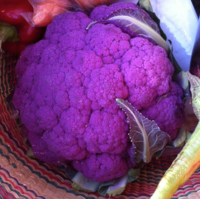
Photo from wikipedia
Abstract Higher flavonoids yield can increase economic and industrial efficiency of Ginkgo biloba Linn. leaf-harvesting plantation. However, high-temperature limits ginkgo leaf flavonoids production in warm climates regions. Few studies have… Click to show full abstract
Abstract Higher flavonoids yield can increase economic and industrial efficiency of Ginkgo biloba Linn. leaf-harvesting plantation. However, high-temperature limits ginkgo leaf flavonoids production in warm climates regions. Few studies have reported on methods that may improve ginkgo leaf flavonoids yield by increasing leaf productivity and flavonoids content simultaneously. This study investigated the effects of combined application of fertilizer for bud growth (FBG) and fertilizer for leaf growth (FLG) on the growth, productivity and flavonoids accumulation of ginkgo leaves, aiming to optimize fertilization schemes for improving leaf flavonoids yield of ginkgo in high-temperature regions. Results revealed that FBG significantly improved twig bud break, twig number, and twig elongation, and increased leaf number (up to 446±27.38 per four-year-old seedling) in spring. Topdressing FLG in summer moderated the decline of leaf SPAD (soil and plant analyzer development) values, modulated leaf nutrient content, and significantly increased single leaf dry weight, antioxidative enzyme activities, and leaf flavonoids content. Dry leaf productivity, flavonoids content, and flavonoids yield of four-year-old ginkgo with combined application of FBG and FLG was 103±16.05 g/plant, 6.54±0.13 mg/g, and 615.71±58.22 mg/plant, respectively, which were comparably high in reference to those in the central production region. These results suggest that the integrated application of FBG and FLG is an effective approach for improving ginkgo leaf flavonoids yield in high-temperature regions.
Journal Title: Industrial Crops and Products
Year Published: 2020
Link to full text (if available)
Share on Social Media: Sign Up to like & get
recommendations!